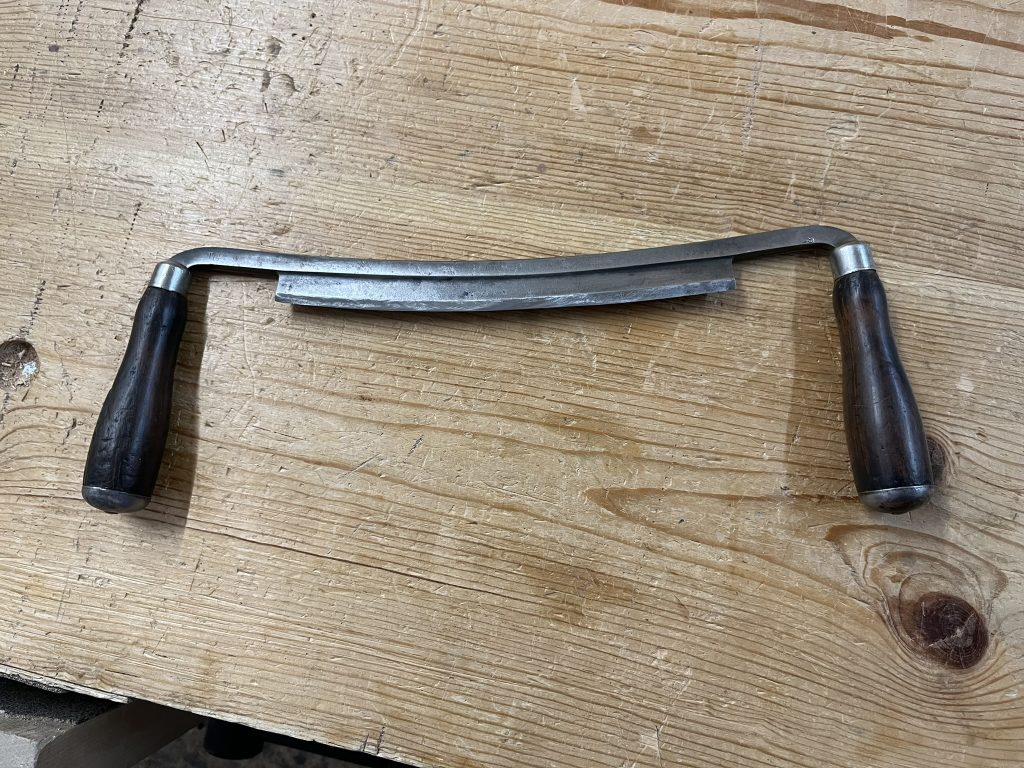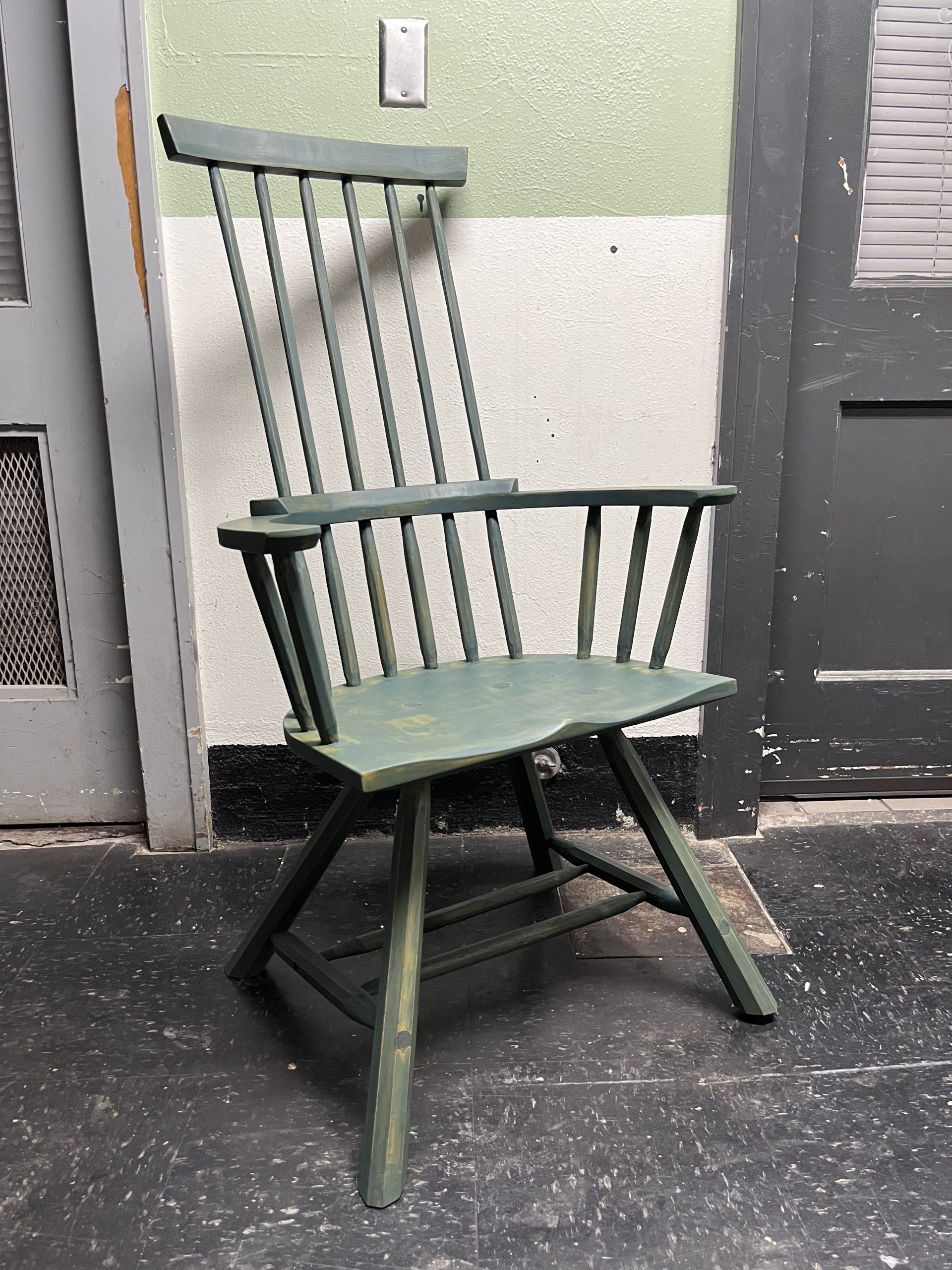
As I’ve been working on my latest chair, I’ve also been flipping through Peter Galbert’s book, Chairmaker’s Notebook. I noticed the drawknife gets a ton of use in his working method, almost every chapter get some use out of the tool. It even has a chapter dedicated to drawknives and their many uses. I’ve had a drawknife for a long time, sitting on a shelf somewhere, but never used it. Reading about how Peter uses it convinced me to finally pull it out, sharpen it up on my diamond stones, and try it out.
Like all hand tools, it takes some practice to get the feel for it. I started with a long stick of scrap, just to see how it cuts. When used aggressively, it’s quite a rough tool. It takes off big chunks, splitting the wood along the grain. It’s so aggressive that if you take a big pull, it’ll even send the chips flying a few feet from the workpiece.

This has turned into my main use for the drawknife so far: taking off big chunks of wood to rough out cylindrical tenons to shape. I used it on this chair to rough out both the conical tenons on the legs, and the cylindrical tenons on the stretchers and sticks.
I’m still getting the hang of the technique, but my approach has been to measure out about how long the final tenon needs to be, start the drawknife cut about a half inch past that mark, and rip off a big chunk. Repeat all the way around the leg or stick. After doing about a dozen stretchers and sticks, I’m able to do all of this rough work with just one aggressive cut on each face of the stick. Then I clean it up with a flat-soled spokeshave, giving it a nice round profile to fit into the mortise I drilled with an auger. The drawknife makes what used to be a pretty clumsy effort with spokeshave and chisel into a quick two-minute job. I’m really glad Peter’s book convinced me to try it out.

Aside from shaping tenons, Peter uses it for lots of other roughing out tasks. Things like rough shaping the seat and crest, or even shaping legs and sticks straight from rough stock. He talks about how it can be used bevel-up or -down for different types of control (splitting along the grain versus carving through the grain). There’s a ton of work he does with the drawknife, and I’m excited to try out some of these approaches as I get better at using it.
